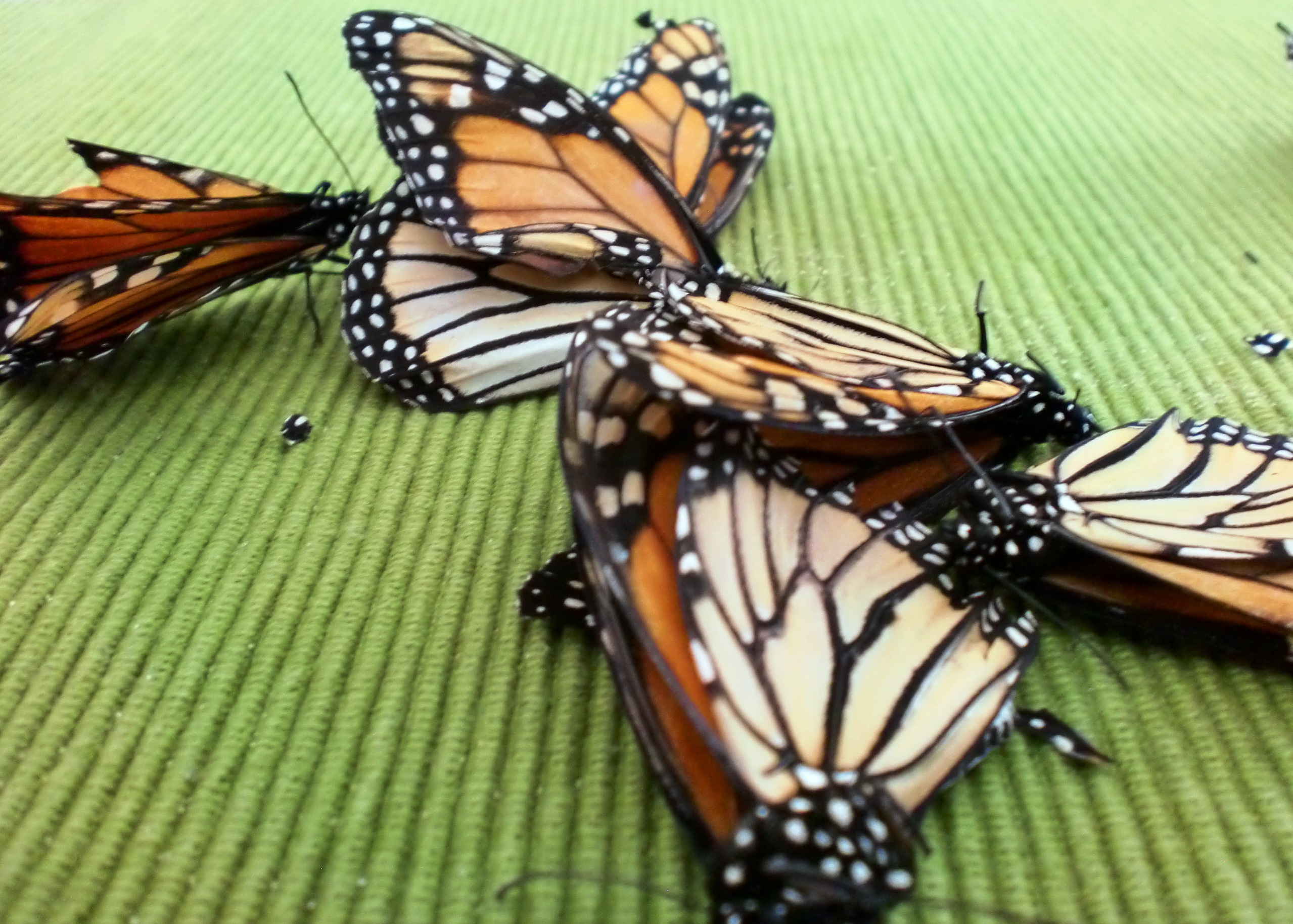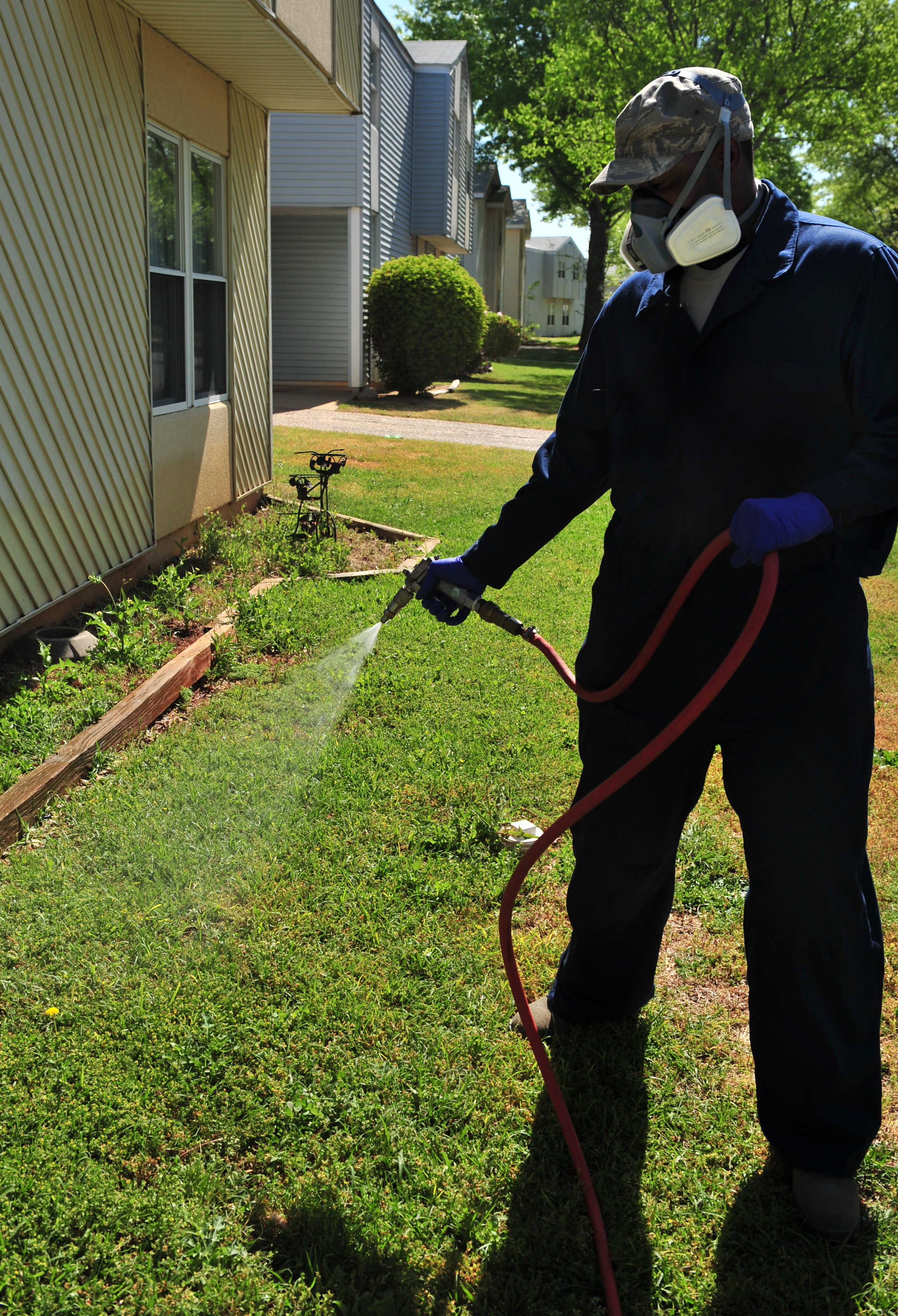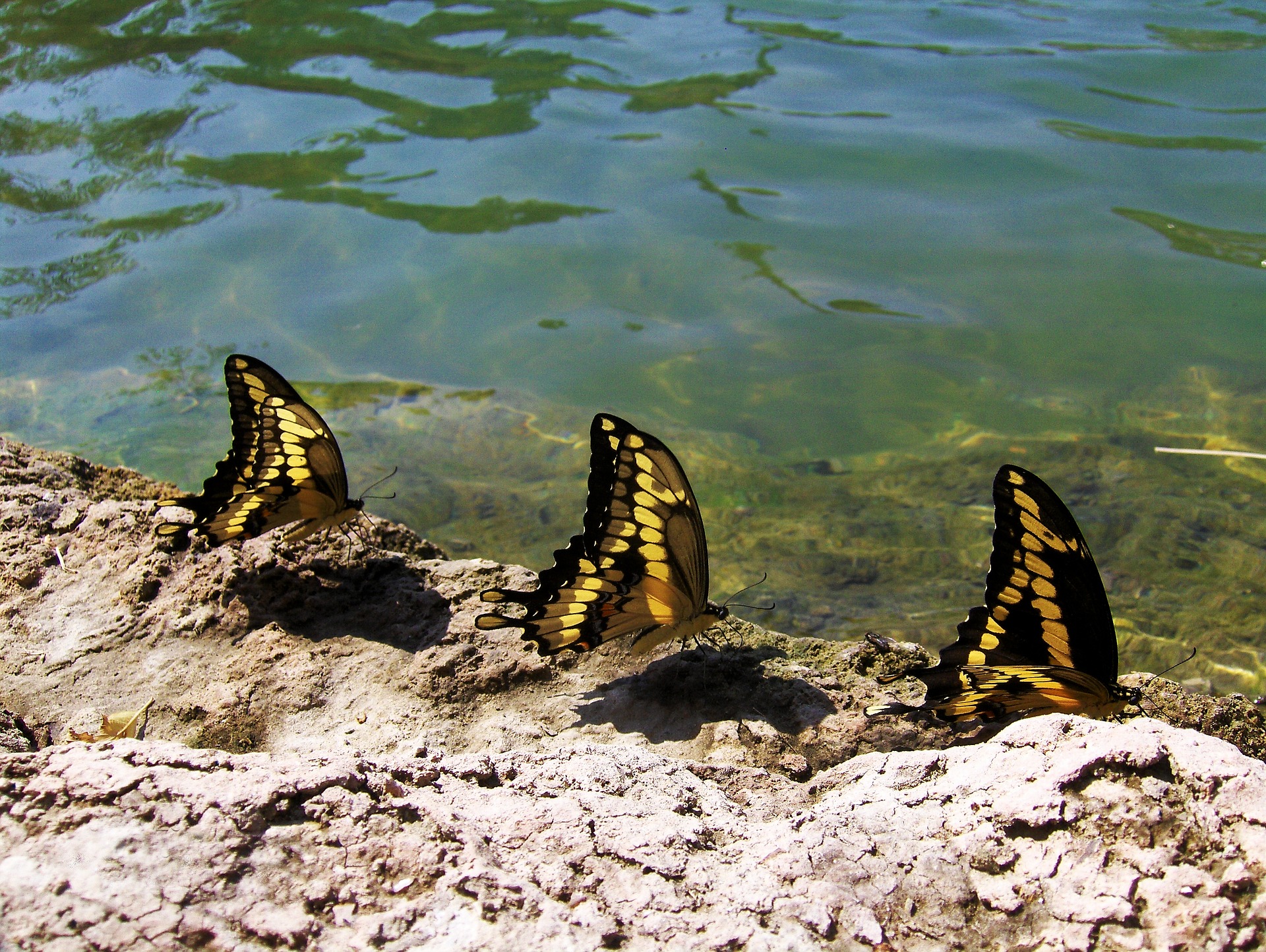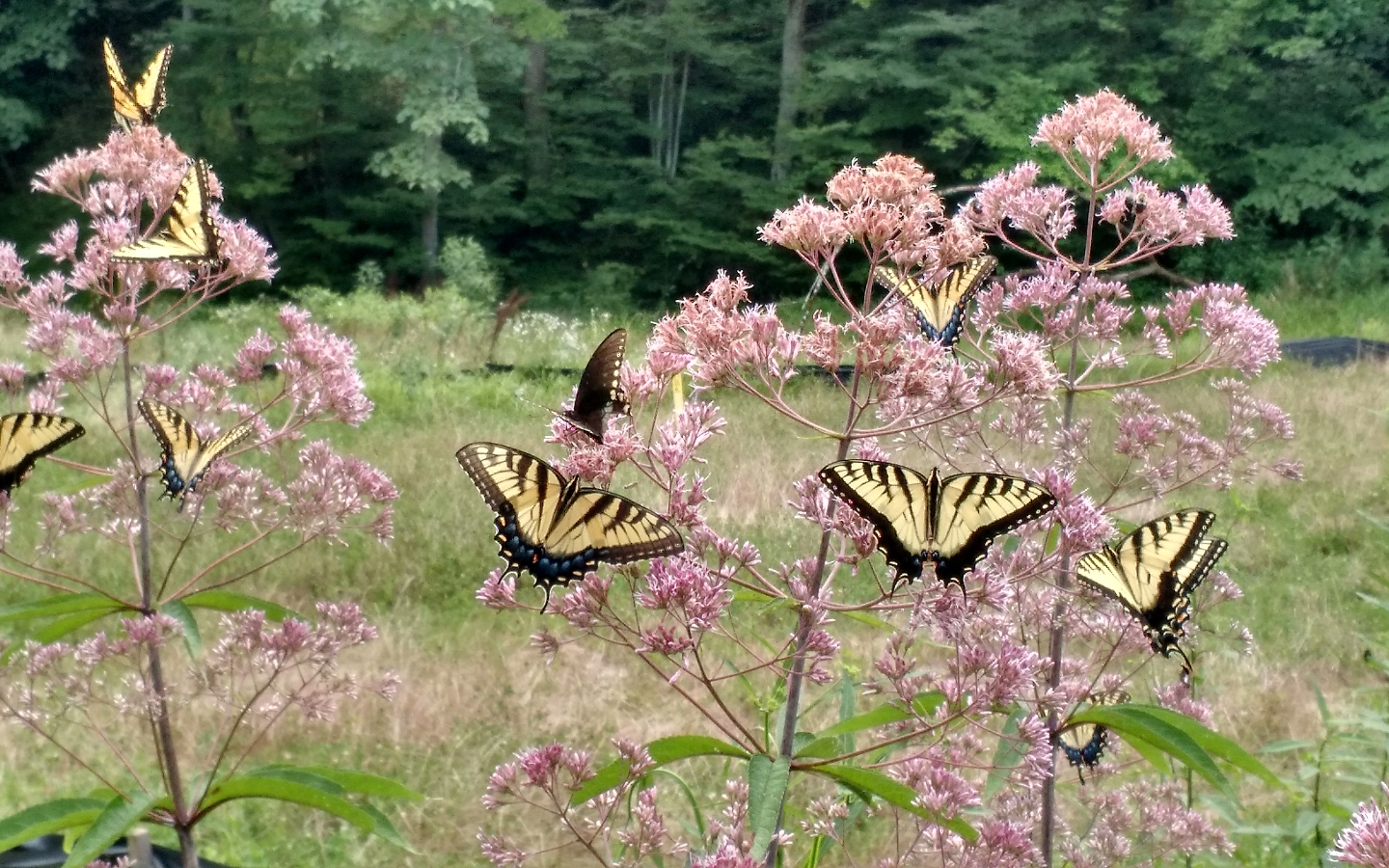To those of us who thrive on nature, there are few experiences that can rival that of watching a butterfly as it gracefully lands on a flower to gather nectar and then delicately spreads open its wings to bask in the sunlight. Its iridescent colors sparkle in the light and invites feelings of peacefulness and joy that carry us through the day.
Butterflies, as charming as they are, hold a much more significant role in our world. Besides being important pollinators, butterflies are accurate visual indicators of the overall health of the environment. They are extremely susceptible to an altered environment, whether it is a change in habitat or exposure to toxins in pesticides and other chemicals. An abundance of a variety of butterflies suggests a healthy ecosystem, while the absence of butterflies marks a declining community.
Across the contiguous United States, there are currently about 575 species of butterflies. (Worldwide = 20,000) Our state of Missouri, with its diverse natural features, is home to at least 198 different species of butterflies. Kansas is thought to have 182 and Illinois 140. Unfortunately, the numbers of many of these species are declining. Since 1950 five different species of butterflies are thought to have gone extinct while today about 40 species, especially the beloved monarch, are considered at risk of extinction soon.
Because of the ever increasing demands on our land by human population, our natural vegetation is disappearing at a rapid pace. Buildings and parking lots replace forests and introduced ornamentals and seas of turf replace prairies. Without their natural habitats, many butterflies, along with other pollinators, move on in search of their necessary native plants.
As non-native ornamentals are introduced in large quantities to our landscaping, the need for more care increases. Introduced plants, not adapted to the soil conditions and climate, tend to have less resistance to our insects and diseases and thus usually need more applications of chemical fertilizers and pesticides to survive. The toxins in these products are lethal to butterflies as well as many other important pollinators .
Establishing butterfly gardens filled with native plants, especially in our highly populated cities, is an important piece of the butterfly conservation effort. This spring would be an excellent time to add a butterfly garden to your yard. By understanding the life cycle of a butterfly and then following a few important guidelines, you can reap a fascinating and beautiful reward.
The life cycle of a butterfly consists of four distinct stages. Female butterflies lay between 100 and 300 tiny eggs on the underside of the leaves or branches of larval host plants. Within four to ten days, the eggs hatch and tiny caterpillars, called larvae, appear. These voracious larvae do nothing but eat and sleep on their host plants until they become full grown. (I have seen them devour a huge host plant in a matter of hours and then move on to the next!) The larvae then attach themselves to something firm – a branch, a plant or even an object in the garden – and form their cocoon, or pupal case. After about ten to fourteen days inside the cocoon, the caterpillar turns into a butterfly and the cycle begins with the new generation. (Butterflies tend to emerge from their pupal cases early in the morning. With careful observation of the stages, you may be able to watch the absolutely mesmerizing process.)
Choose a sunny yet protected spot for your butterfly garden. Butterflies, are cold blooded and need the sun’s warmth for energy. Although some protection from direct wind helps conserve their energy and makes flight much easier for them, butterflies don’t seem to be attracted to areas completely surrounded by windbreaks. The Missouri Botanical Garden recommends planting a tiered “windscreen of nectar producing shrubs like lilacs, mock orange, butterfly bush or viburnums” along the edges of a sunny, open space.
Like all species, butterflies need water to survive. Although adding a stream or pond to your butterfly garden helps to create the perfect environment (for both you and the butterfly), neither is necessary. Including small puddles throughout the garden can accomplish the same thing. We have used flat rocks with depressions, bird baths with cobblestones and even buried the saucers of clay pots in our gardens to provide water. Butterflies have used them all.
Before you begin planting your garden,there is one more additional step that needs to be completed. Conservationists recommend that you research which varieties of butterflies are common to your area and what combination of native plants, especially larval plants, they need to thrive throughout their lives. Typically, garden centers, extension services and local botanical gardens supply this information both online and in print. Knowing which species are prevalent in your area and which plants they prefer increases the likelihood that your garden will attract and support butterflies.
Once you have completed your research, have your space established and prepared the bed for planting, then it is time to select appropriate plant varieties that support the entire lifecycle of your butterflies and provide you with a pleasing design. Many of the larval plants, absolutely essential for supporting butterfly populations and used as shelter at night or during inclement weather, are unfortunately often tall and weedy looking. Reserving a nearby but separate space for them can be more visually pleasing. Cutting these plants back occasionally pushes new growth and succulent food for larvae as they hatch throughout the season.
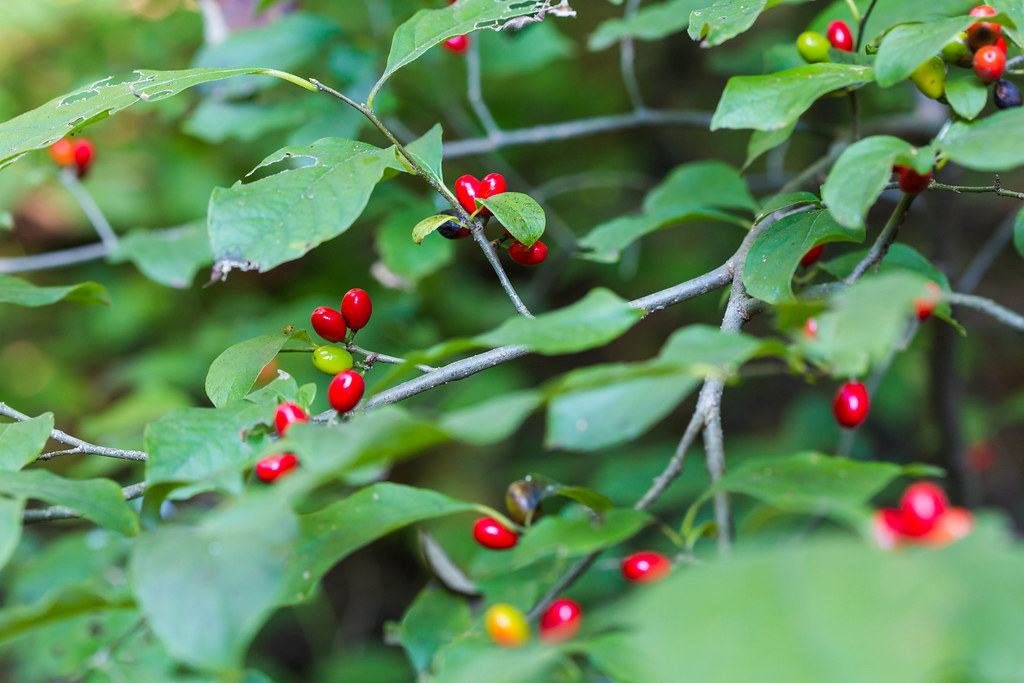
Common spicebush is a native Missouri larval food plant.
Butterflies see color and are attracted to large clumps of brightly colored flowers, especially reds, oranges and yellows.. Flowers with broad, flat petals (purple coneflower) or multiple flower heads (butterfly weed) give the butterflies a place to rest while they search for their food source, nectar. Avoid planting flowers with rounded, mum-like tops; the form makes it difficult and sometimes impossible, for butterflies to reach the hidden nectar. Choose varieties of nectar producing flowers with bloom times that range from early spring into the late fall so that butterflies will continue to visit your garden all season. I’ve included a short list of some of the “must-haves” at the end of the blog.
Mixing large clumps of diverse annuals and native perennials not only guarantees an inviting variety of nectar sources, but also helps control insect pests and diseases. Since chemicals are so toxic to fragile butterflies, use only natural control methods. Remove insect pests with streams of water, pick them off by hand or use a gentle, organic insecticidal soap. Trim and remove any diseased foliage. Try planting marigolds, herbs such as mints or other plants that naturally repel unwanted insects in and around your garden. Finally, learn to love,or at least tolerate, a few chewed leaves.
Changing the downward spiral of a species sounds like an overwhelming task best left to experts in the field. The reality is that each of us can be part of the solution simply by including native beauty in your landscape. For help in designing and installing your own butterfly garden, contact the experienced design staff at Embassy Landscape Group. They are there to help.
PERENNIAL NECTAR PLANTS FOR THE BUTTERFLY GARDEN
(COMMON NAME)
- Aster
- Black-eyed Susan
- Butterfly Bush
- Butterfly Weed
- Button Bush
- Cardinal Flower
- Coreopsis
- Joe-Pye Weed
- Liatris
- Monarda
- Ninebark (shrub)
- Pincushion Flower
- Phlox
- Purple Coneflower
- Rose Verbena
- Swamp Milkweed
LARVAL FOOD PLANTS
(COMMON NAME)
- Birch Tree
- Dogwood Tree
- Hackberry Tree
- Oak Tree
- Spicebush
- Dill
- Parsley
- Bronze Fennel
- Clover
- Violets

